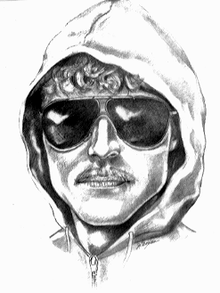Jeanne Boylan
Jeanne Marie Boylan (born June 2, 1953)[1] is an American forensic composite artist who has worked with the FBI on a wide variety of major criminal cases, famously supplying composites of the Unabomber,[2] as well as the suspects in the murders of Polly Klaas[3] and Molly Bish.[4] Boylan's unique approach to interviewing eyewitnesses and the startling accuracy of her composites earned her a prominent reputation, and she was a correspondent on the television series America's Most Wanted as well as being recurrently featured on Unsolved Mysteries.
Biography

Boylan was born in Montrose, Colorado, one of six children, to Jean and Thomas Boylan.[5] Boylan's parents were both from New York City; her father, a plumber, had grown up in the Bronx, and her mother worked for Life magazine in Manhattan.[6] The couple, who had tired of city life, relocated to Colorado in 1947 to start a family.[5] Boylan graduated from Montrose High School, and afterward moved to Durango, Colorado, before moving to Oregon.[7]
She began her career in 1977, working as a civilian employee following up on investigations for the Multnomah County Sheriff's Department, and later the Portland Police Bureau in Portland, Oregon.[3] Boyland's first case came in 1978 was a robbery suspect known as the "Waistband Bandit" in Portland, who habitually tucked a pistol into his waistband. Her facsimile of the suspect was integral in his capture.[7]
By 1994, Boylan had become the most prominent composite artist working in criminal investigation, having supplied composites in over 7,000 crimes, most notably the Unabomber and the murder of Polly Klaas in Petaluma, California.[8]
Unlike most police artists, Boyland does not utilize the FBI Facial Identification Catalogue in drawing composites.[7] She has described her unconventional approach to forensic sketching as such:
I really rely on the integrity of the memory. It's very important that I don't implant any information...I'm not showing someone a selection of visual aids and saying, was it this chin, pick out a set of eyes, pick out a nose, et cetera. I'm actually working in depth -- in terms of how memories are stored under a traumatic condition, how why people remember and how to retrieve that information without distorting it.[9]
In 2000, Boylan wrote a book, Portraits of Guilt, chronicling her work in the field.[10]
Notable cases
- Unabomber
- Murder of Polly Klaas
- Oklahoma City Bomber
- Murder of Molly Bish
- Kidnapping of Dianna Ortiz
- Susan Smith
References
- ↑ "United States Public Records, 1970-2009," database, FamilySearch (23 May 2014), Jean Marie Boylan, Residence, Portland, Oregon, United States; a third party aggregator of publicly available information.
- ↑ O'Neill, Helen (February 18, 2001). "Drawing on memory". CJ Online. Retrieved February 9, 2016.
- 1 2 Barnard, Jeff (November 30, 1997). "Artist Gets The Tough Crimes-- Jean Boylan's Images Often The Most Accurate". Seattle Times. Retrieved December 29, 2015.
- ↑ Ring, Kim (July 17, 2012). "Killer's effects reveal possible link to Bish". Telegram. Retrieved February 9, 2016.
- 1 2 Boylan, Jeanne (November 7, 2009). "No place like home: Family remembers Tom Boylan, thanks Montrose". Montrose Daily Press. Retrieved February 10, 2016.
- ↑ "Jean Louise Boylan". Montrose Daily Press. January 28, 2010. Retrieved February 9, 2016.
- 1 2 3 Rosen, Marjorie (March 28, 1994). "Dead Ringers". People. Retrieved February 9, 2016.
- ↑ Levine, Bettijane (January 12, 1994). "Drawing Attention : Forensic artist Jeanne Boylan has spent 14 years perfecting the art of sketching suspects. Some of her interviewing techniques may be unorthodox, but police say her work makes the phones ring with new leads.". The Los Angeles Times. Retrieved February 9, 2016.
- ↑ Cossack, Roger; Van Susteren, Greta (September 4, 2000). "Burden of Proof: Jeanne Boylan's Facial Identifications Profile the Portraits of Guilt (transcript)". CNN. Retrieved February 9, 2016.
- ↑ Lerten, Barney (June 28, 2000). "She just can't say no: Bend profiler back at it, aiding in boy's abduction case". Bend Bungle. Retrieved January 31, 2016.